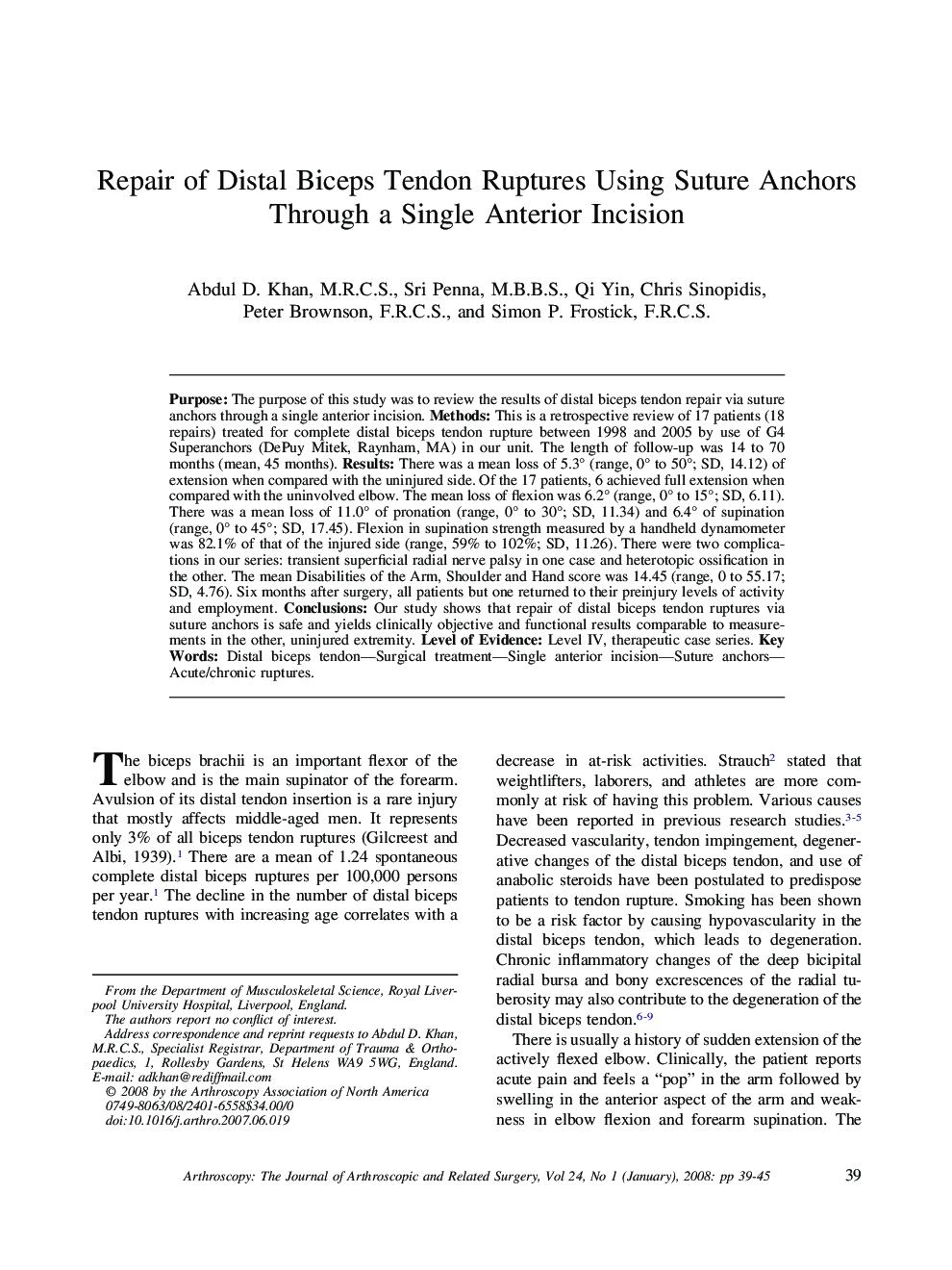| Article ID | Journal | Published Year | Pages | File Type |
|---|---|---|---|---|
| 4045201 | Arthroscopy: The Journal of Arthroscopic & Related Surgery | 2008 | 7 Pages |
Purpose: The purpose of this study was to review the results of distal biceps tendon repair via suture anchors through a single anterior incision. Methods: This is a retrospective review of 17 patients (18 repairs) treated for complete distal biceps tendon rupture between 1998 and 2005 by use of G4 Superanchors (DePuy Mitek, Raynham, MA) in our unit. The length of follow-up was 14 to 70 months (mean, 45 months). Results: There was a mean loss of 5.3° (range, 0° to 50°; SD, 14.12) of extension when compared with the uninjured side. Of the 17 patients, 6 achieved full extension when compared with the uninvolved elbow. The mean loss of flexion was 6.2° (range, 0° to 15°; SD, 6.11). There was a mean loss of 11.0° of pronation (range, 0° to 30°; SD, 11.34) and 6.4° of supination (range, 0° to 45°; SD, 17.45). Flexion in supination strength measured by a handheld dynamometer was 82.1% of that of the injured side (range, 59% to 102%; SD, 11.26). There were two complications in our series: transient superficial radial nerve palsy in one case and heterotopic ossification in the other. The mean Disabilities of the Arm, Shoulder and Hand score was 14.45 (range, 0 to 55.17; SD, 4.76). Six months after surgery, all patients but one returned to their preinjury levels of activity and employment. Conclusions: Our study shows that repair of distal biceps tendon ruptures via suture anchors is safe and yields clinically objective and functional results comparable to measurements in the other, uninjured extremity. Level of Evidence: Level IV, therapeutic case series.
